Thursday – February 14, 2019 Happy Valentine’s Day!
We spent a quiet night aboard The Mojito in Luxor – the ancient capital of Thebes – on the east bank of the Nile River. Today we were scheduled to visit the huge Karnak Temple Complex. This is a vast open-air museum which is still undergoing extensive restoration.
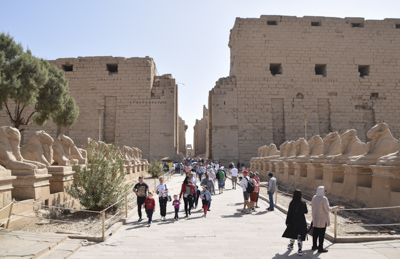
What distinguishes Karnak from other ancient Egyptian sites and temples is the length of time it was built and used. Construction began in about 2055BC and continued until about 100AD; from the Egyptian Middle Kingdom into the Ptolemaic period. Therefore, the temple is a hodgepodge of ancient architectural designs.
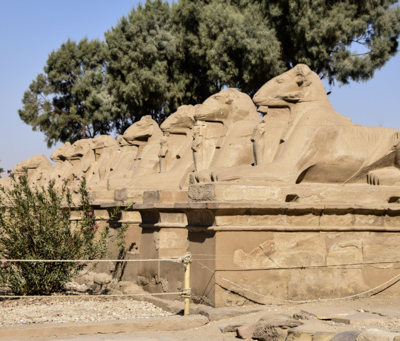

According to Wikipedia, “Approximately thirty pharaohs contributed to the buildings, enabling it to reach a size, complexity, and diversity not seen elsewhere. Few of the individual features of Karnak are unique, but the size and number of features are overwhelming.”
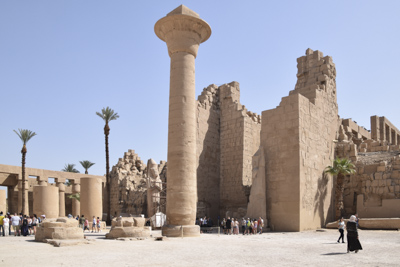
One highlight of the complex is the Hypostyle Hall, which is an area of 50,000 square feet which contains 134 massive columns. The diameter of each column is more than ten feet.
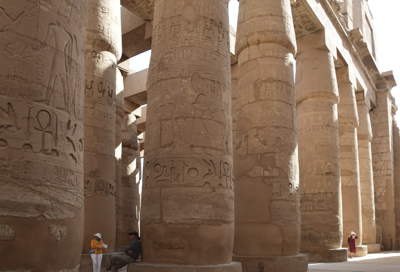

The Hypostyle Hall was begun by King Seti I (1313-1292BC) and was completed by his son Rameses II between 1292BC to 1258BC.
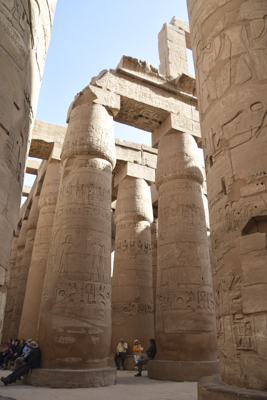
There are four main parts of the Karnak Complex and currently only one part is open to the public. The other sections are under continuous restoration.
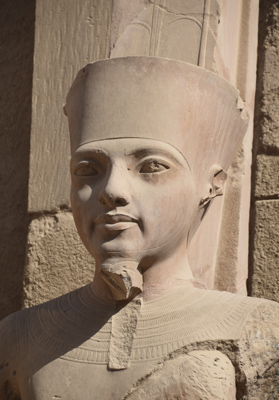
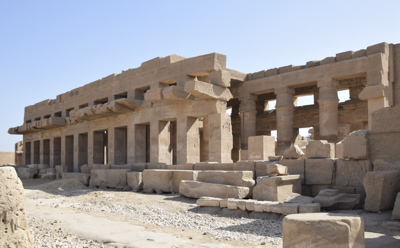

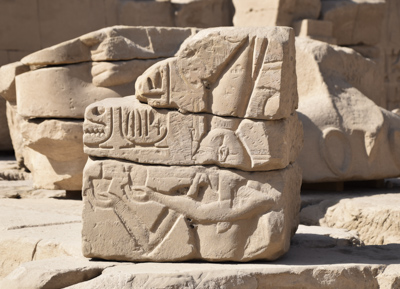
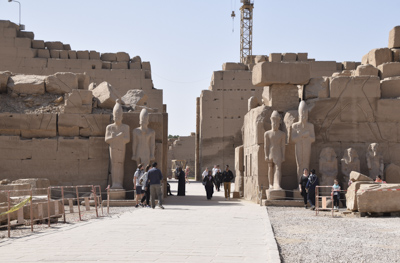
Parts of the complex look like ancient ruins and other parts resemble a vast construction site. Karnak reminded me of a gigantic 3-dimensional puzzle.
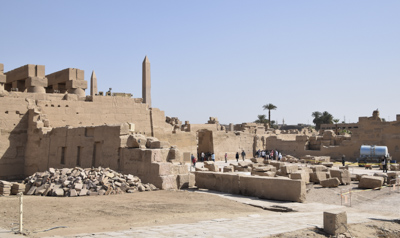
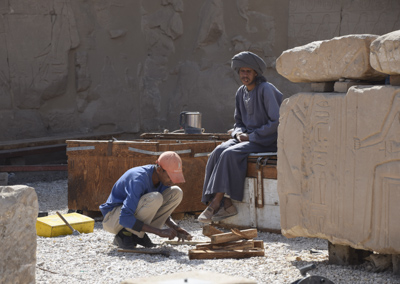
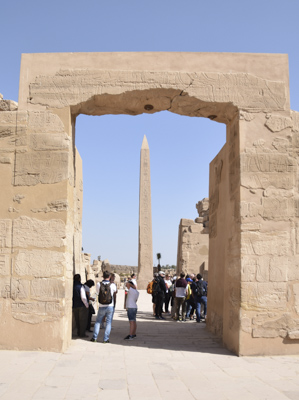
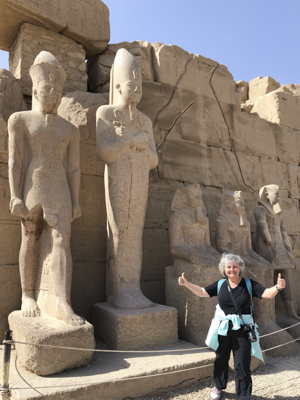
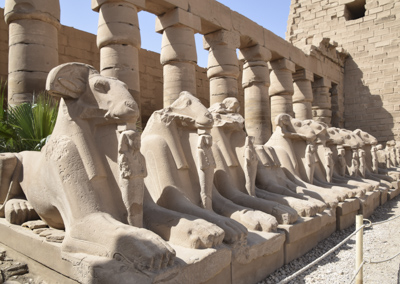
Exit through the gift shops!
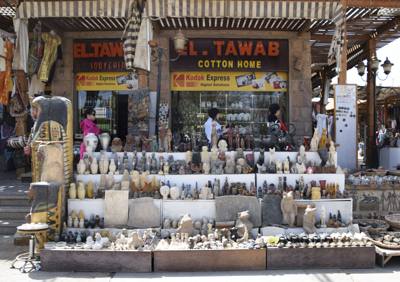
After a few hours of wandering around the Karnak Temple Complex, we left and continued to a papyrus workshop. I wasn’t interested in purchasing an expensive work of art done on papyrus however I was curious how “paper” was made from the plant.
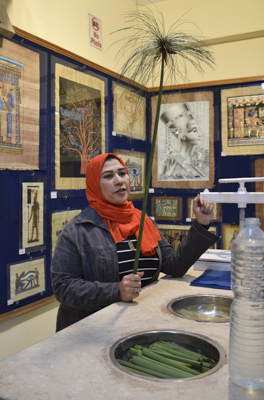
We watched a demonstration and learned the stalk of the papyrus plant is cut into pieces, soaked, pressed, and ‘woven’ into flat sheets. Paint is then applied to the papyrus ‘paper.’ Amazing….
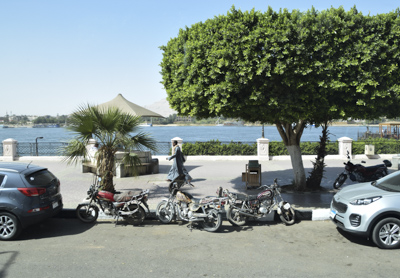
We returned to The Mojito for lunch and afterwards, a small group joined Maged for a walk around Luxor. Our first stop was El Souk. The traditional market street for local people is an important part of Egyptian culture. I love outdoor markets!!
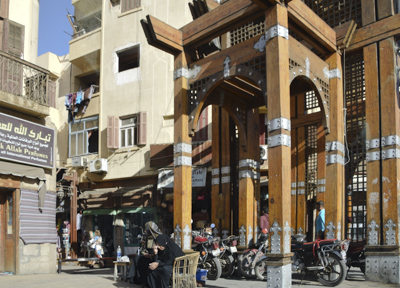
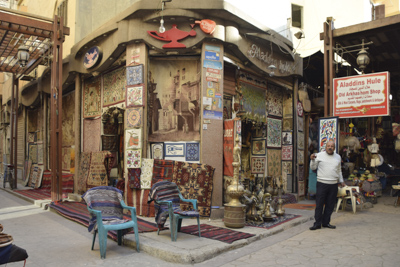
It was joy to walk down the narrow streets lined with shops offering a huge variety of interesting goods.
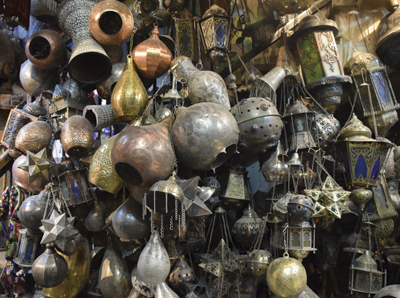
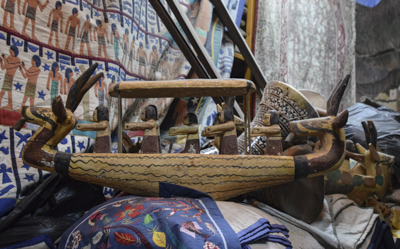

It was feast for the eyes! And sooo much fun!
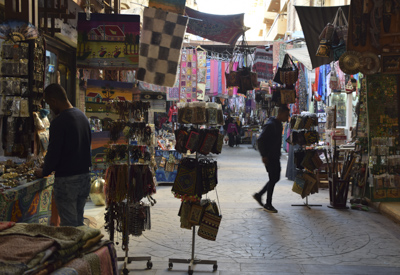
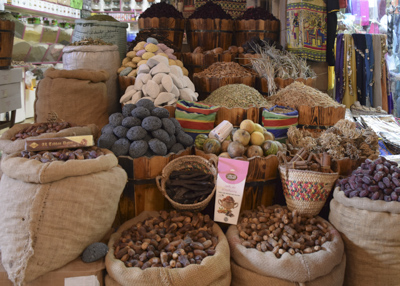

Back out onto the main street, I saw the Temple of Luxor across busy modern traffic.
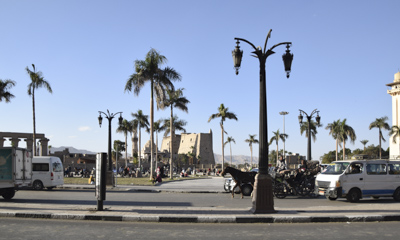
I quickly snapped the photo below as a delivery truck passed by loaded with grain and pulled by a mule. I think the picture ‘says it all’ about modern Egypt. In the background there was a tourist horse & carriage below ads for modern furniture and electronics posted on modern buildings. In the foreground there was a man wearing the traditional galabeya talking on a cellphone next to three school girls wearing backpacks and sneakers.
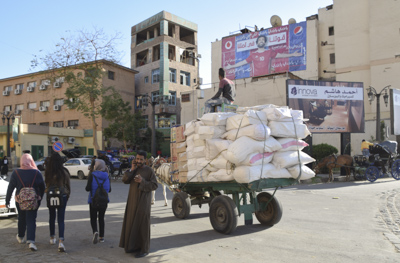
Our little group continued down the main street along the corniche on the Nile River. We stopped briefly at a wonderful bookstore which sold English-language books and prints.
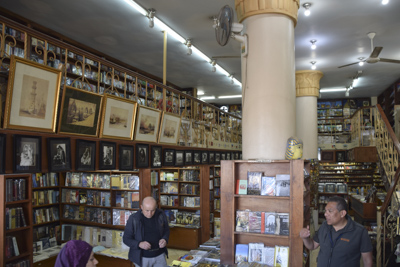
Nearby was the famous Winter Palace Hotel where the British Egyptologist Howard Carter and Lord Carnarvon stayed. In 1922, Carter discovered King Tutankhamen’s intact tomb financed by Lord Carnarvon.
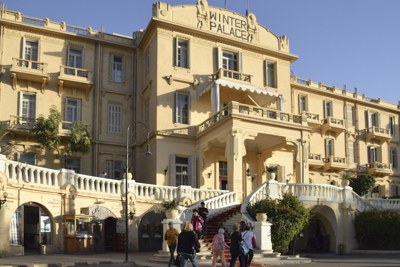
We walked up the stairs which leads to the lobby to look around the public spaces. We were greeted by a man playing beautiful soft music on a reed flute. Perhaps it was the ancient instrument called a ney.

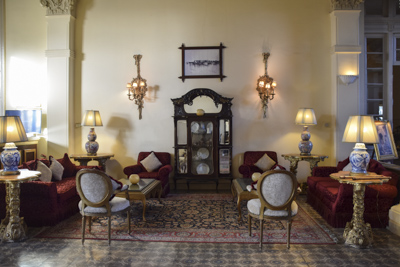
The British mystery writer, Agatha Christie, wrote her famous story – Death on the Nile – while staying at the Winter Palace.

We went out on the terrace overlooking the river to sit and have some refreshments as the sun was reaching down over the west bank.

A few people rode a carriage back to our boat, The Mojito. I chose to walk along the busy corniche.
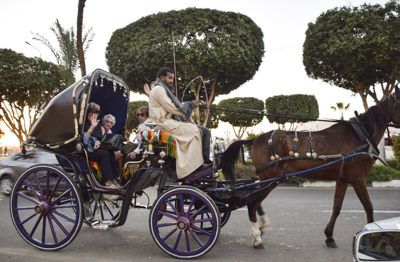
It had been another incredible day in Egypt!